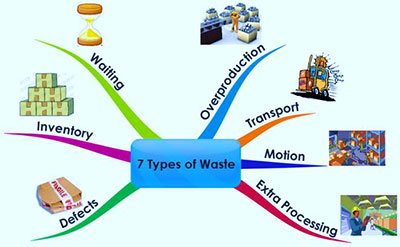What Is Gemba Walk? [Meaning, Definition And Application]
In case you are trying to learn a bit more about running a successful business or organization, you will probably read people talking about Gemba walk. But what is Gemba walk?
Simply put, Gemba is a Japanese term that means "the real place". So, when you read or hear someone talking about the Gemba walk, you just need to know that it means going to where things happen, to the floor, to where the job is done.
Make sure that you get your free training on Six Sigma today.
Make sure that you get your free training on Six Sigma today.
The truth is that many leaders and management still prefers to stay in their offices and conference rooms deciding on the best approaches for their companies. Nevertheless, this isn't a good idea since you don't really know what is happening in your company or organization. So, instead, you should go to the place where the value is created.
When most people ask about what is Gemba walk, they are usually referring to manufacturing since this is where is more often to hear about this term. So, whenever you hear or read this, this only means that the Gemba is the factory floor.
Learn more about the problem-solving strategy in Lean Six Sigma.
When most people ask about what is Gemba walk, they are usually referring to manufacturing since this is where is more often to hear about this term. So, whenever you hear or read this, this only means that the Gemba is the factory floor.
Learn more about the problem-solving strategy in Lean Six Sigma.
What Is Gemba Walk?
In lean manufacturing, the main goal of Gemba is to detect the easily visible problems in the production line which can only be acknowledged by seeing the real place by the leaders.
One of the main sayings, when you are talking about the Gemba walk, is "Go see, ask why, show respect". This means that leaders should go to the floor and see all the processes with their own eyes. However, they shouldn't confront the employees with the flaws. Instead, they should be ready to listen to them and show respect for what they do.
One of the main sayings, when you are talking about the Gemba walk, is "Go see, ask why, show respect". This means that leaders should go to the floor and see all the processes with their own eyes. However, they shouldn't confront the employees with the flaws. Instead, they should be ready to listen to them and show respect for what they do.
So, how can you apply the Gemba Walk?
The truth is that when you want to adopt this strategy, you will need to ask a lot of questions. Here are some of the questions that are usually asked during a Gemba Walk:
#1: Questions About The SQDC Board Data:
- Do employees look at these charts and how often do they do it?
- Who is the responsible for updating the charts?
- Do customers and suppliers look at these charts?
- What values do employees take from these charts?
Learn about the cost of poor quality (COPQ).
#2: Questions About The Process Or Activity:
- How can you tell if everything is normal and how do you know when something wrong is happening?
- Would finite measurements be able to tell us more? What exactly?
- How do you know that employees are following exactly the standard work?
- When something happens, what do the team teamer and the team members do? Are they all aware of their responsibilities and why they are taking these steps?
Should you use the Pareto analysis and the Pareto chart?
#3: Questions About The Implementation Of A Lean Practice:
- How can we sustain the practices that are changing?
- How will you be able to verify these practices?
- What changes do we need to make to ensure that we can keep a better track of the effectiveness and to measure process?
So, a Gemba walk assumes that there is a good and clear communication between the leaders/management and the employees. They should be able to answer all the questions and you should make all the efforts to show them the benefits of implementing the changes that need to be made.




 RSS Feed
RSS Feed